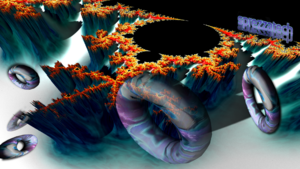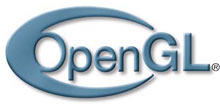Graphics: Difference between revisions
No edit summary |
No edit summary |
||
| Line 1: | Line 1: | ||
[[File:Tubefire.png|right|thumb|SprezzOS contains powerful graphics support.]] | [[File:Tubefire.png|right|thumb|SprezzOS contains powerful graphics support.]] | ||
Screen-based displays (primarily LEDs and CRTs) underpin most users' interactions with their desktops and mobile devices. | Screen-based displays (primarily LEDs and CRTs) underpin most users' interactions with their desktops and mobile devices. Modern desktops regularly drive one or more large, colorful, high-resolution LEDs via one or sometimes multiple video cards. Graphics processing units commonly contain more transistors than the CPUs with which they are mated. Despite this, the basic process interface exposed by ANSI C and the UNIX kernel consists of two character streams. | ||
'''To explain: Gallum, DRM, DRI, KMS, OpenGLES, OpenVG, X, Wayland, widgetsets, VESA. VBE, DDC, EDID, TMDS, DMI, HDMI, DisplayPort...''' | '''To explain: Gallum, DRM, DRI, KMS, OpenGLES, OpenVG, X, Wayland, widgetsets, VESA. VBE, DDC, EDID, TMDS, DMI, HDMI, DisplayPort...''' | ||
Revision as of 04:29, 11 November 2012

Screen-based displays (primarily LEDs and CRTs) underpin most users' interactions with their desktops and mobile devices. Modern desktops regularly drive one or more large, colorful, high-resolution LEDs via one or sometimes multiple video cards. Graphics processing units commonly contain more transistors than the CPUs with which they are mated. Despite this, the basic process interface exposed by ANSI C and the UNIX kernel consists of two character streams.
To explain: Gallum, DRM, DRI, KMS, OpenGLES, OpenVG, X, Wayland, widgetsets, VESA. VBE, DDC, EDID, TMDS, DMI, HDMI, DisplayPort...
Character Output
Serial consoles
GRUB on VGA
Linux system console on VGA
Framebuffer

An abstraction of hardware, mapping memory to displayed pixels. If a framebuffer driver is active, /dev/fbX devices will exist, and the fbset tool can be used to display their statuses. It is generally not advised to use a framebuffer driver at the same time as X-based hardware control, though this sometimes works in practice. When a framebuffer is present and supported at kernel boot time, Linux will display a Tux logo (see right) for each processor in the machine.
OpenGL

OpenGL (the Open Graphics Library) is an API specification. On desktop Linux, there are three major implementations of OpenGL:
- NVIDIA's proprietary implementation, which supports most NVIDIA cards
- AMD's proprietary implementation, which supports most AMD cards
- Mesa, an open implementation mixing hardware acceleration with software fallback. It includes:
- Nouveau, an open implementation for NVIDIA cards
- Radeon, an open implementation for AMD cards
- An open implementation for Intel cards
- Implementations for embedded devices
- OMAP (Texas Instruments)
- SGX (PowerVR)
Generally, the proprietary drivers tend to support newer OpenGL features and provide better performance, while the Mesa drivers are more smoothly integrated with the rest of the graphics stack (Kernel Mode Switching, Direct Rendering Infrastructure, XRandr, etc). Standard Linux tools might fail to work with the proprietary drivers, forcing use of proprietary tools to control the device.
See Also
- VGA compatible text mode on Wikipedia